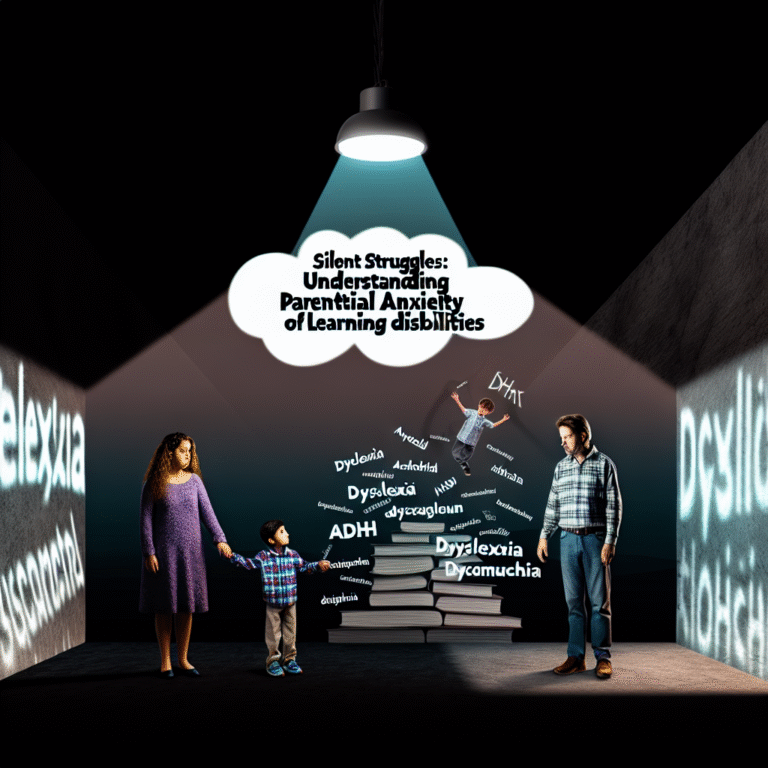Bridging the Gap: How Transition Planning Can Empower Students with Learning Disabilities
Introduction
Transitioning from one life stage to another is a monumental process, and for students with learning disabilities, this transition can feel particularly daunting. The journey from high school to adulthood represents a significant shift, filled with new challenges and opportunities. The importance of strategic transition planning during this phase cannot be overstated. In this article, we’ll explore the concept of transition planning, its critical role in empowering students with learning disabilities, and practical strategies for educators, parents, and advocates. By the end, you’ll understand how to effectively bridge the gap: how transition planning can empower students with learning disabilities, leading them to a brighter, more independent future.
Understanding Transition Planning
What is Transition Planning?
Transition planning is a structured process intended to help students with disabilities navigate from high school to adult life. This encompasses a multitude of factors, including post-secondary education, vocational training, employment opportunities, and independent living skills. Ideally, effective transition planning is initiated by age 14, as mandated by IDEA (Individuals with Disabilities Education Act), to ensure students receive the support they need throughout their development.
Why is Transition Planning Important?
Transition planning is crucial for several reasons:
- Self-Advocacy: Teaching students to articulate their needs and preferences empowers them to take ownership of their futures.
- Skill Development: Focused transition plans help students develop essential life and vocational skills that are necessary for adulthood.
- Post-Secondary Success: Strategic planning increases the likelihood of successful outcomes in post-secondary education, employment, and independent living.
The reality is clear: Bridging the gap: how transition planning can empower students with learning disabilities is not just a theoretical concept—it’s essential for real-world impact.
Elements of Effective Transition Planning
To ensure the transition process is successful, it must include several critical elements:
1. Individualized Transition Plans (ITPs)
An Individualized Transition Plan is a tailored roadmap for each student, outlining specific goals in the areas of post-secondary education, vocational training, and independent living. Collaborating with the student, their family, educators, and relevant professionals is essential. Each ITP should reflect the student’s strengths, preferences, interests, and needs.
Case Study: Sarah’s Journey
Sarah, a 17-year-old student with dyslexia, struggled with reading comprehension but excelled in hands-on tasks. Her ITP included a focus on vocational training in automotive repair while providing accommodations for her reading difficulties ahead of her high school graduation. This personalized approach not only engaged Sarah but also equipped her with a clear pathway toward a successful post-secondary experience.
Analysis of Case Study: Sarah’s success illustrates the power of personalized ITPs in bridging the gap between high school and real-world environments by catering to each student’s unique abilities.
2. Collaborative Team Approach
Transition planning should be a team effort that includes input from:
- Educators
- School counselors
- Parents/guardians
- The student
- Community service providers
A collaborative approach ensures that multiple perspectives inform the transition plan, yielding a comprehensive strategy (connecting with community resources is particularly vital).
3. Focus on Life Skills Development
Life skills are integral to an independent lifestyle. Transition planning should incorporate the following areas:
- Money management
- Time management
- Cooking and nutrition
- Job interview skills
Learning these skills requires real-world practice, discussions, and formal instruction, solidifying student readiness for adult responsibilities.
4. Explore Vocational Opportunities
One of the most significant aspects of transition planning is exposing students to vocational opportunities. Programs such as job shadowing, internships, and volunteer experiences can provide essential insights and connections, helping students align their interests with potential career paths.
Chart: Vocational Training Statistics
| Vocational Training Outcome | Percentage of Success |
|---|---|
| Employment within 2 years | 75% |
| Continued education | 45% |
| Independent living | 60% |
5. Community Engagement
An effective transition plan goes beyond classroom instruction by integrating community resources. By participating in community-based programs, students experience real-world situations enhancing their confidence and competence.
Case Study: Mike’s Community Engagement
Mike, diagnosed with ADHD, faced challenges finding focus, particularly in school settings. His transition plan included regular involvement in a community gardening project, where he honed his teamwork and organizational skills. Through this engagement, Mike not only learned about responsibilities but also discovered his passion for environmental science.
Analysis of Case Study: Here, community involvement served dual purposes: Mike developed essential skills while discovering career interests, demonstrating how strategic planning can bridge the gap between education and future career pathways.
6. Continuous Assessment and Adaptation
Transition planning is not static. It requires ongoing assessment and, when necessary, adaptations to account for evolving student interests and external changes. Regular check-ins can facilitate necessary adjustments, ensuring that the ITP remains relevant and effective.
Overcoming Challenges in Transition Planning
Transition planning can face obstacles that hinder its success. Awareness of potential challenges can lead to effective strategies for overcoming them.
1. Limited Awareness or Understanding
Some educators and families may not fully grasp the transition planning process or its significance. Offering training sessions, workshops, and informational resources can aid in dispelling misconceptions and fostering collaboration.
2. Inadequate Resources
Many schools lack the funding or resources necessary for comprehensive transition programs. Securing community partnerships can help bolster programs, allowing students access to resources they would otherwise miss.
3. Balancing Academics and Transition Planning
While focusing on academic achievement is important, it should not overshadow the need for practical skills. Schools can incorporate transition planning into the curriculum, ensuring students receive well-rounded support.
Bridging the Gap: How Transition Planning Can Impact Outcomes
The implications of effective transition planning are profound. Research indicates that students who participate in well-structured transition planning are more likely to experience positive outcomes in several areas:
- Employment Rates: Data shows that students who had comprehensive transition support were more likely to secure stable employment post-graduation.
- Post-Secondary Success: A defined plan can lead to increased enrollment and completion rates in post-secondary education.
- Quality of Life: Individuals prepared for independent living report higher satisfaction with their daily lives and personal responsibilities.
Table: Outcomes of Students with Learning Disabilities
| Area of Transition | With Effective Planning | Without Planning |
|---|---|---|
| Employment Rate | 75% | 35% |
| Higher Education Enrollment | 55% | 20% |
| Independent Living Skills | 70% | 30% |
Conclusion
As we have explored, the importance of effective transition planning cannot be overstated. The journey for students with learning disabilities transitioning into adulthood is complex and fraught with challenges. However, by implementing structured and personalized transition plans, we can significantly bridge the gap: how transition planning can empower students with learning disabilities.
To create a future where every student thrives, it’s essential for parents, educators, and communities to work collaboratively to foster environments that promote self-advocacy, skill development, and real-world experiences. Together, we can ensure that students with learning disabilities have the tools they need for a confident and independent future.
FAQs
1. What age should transition planning begin?
Transition planning should ideally begin at age 14, or earlier, depending on the individual needs of the student. This timeframe allows sufficient preparation for adult life.
2. Who is involved in the transition planning team?
The transition planning team typically includes educators, parents, school counselors, the student, and community service providers, each contributing unique insights to the process.
3. How can parents support transition planning at home?
Parents can support transition planning by fostering independence at home, discussing future goals, and encouraging self-advocacy among their children.
4. What are some resources available for transition planning?
Resources may include school special education coordinators, local vocational rehabilitation services, community-based organizations, and online platforms dedicated to special education support.
5. How can schools improve their transition planning efforts?
Schools can improve their transition planning by offering staff training, integrating transition-focused activities into the curriculum, and establishing partnerships with local businesses and community services.
This comprehensive approach empowers us to not only understand but actively bridge the gap: how transition planning can empower students with learning disabilities. Together, we can make a profound difference in their futures.













